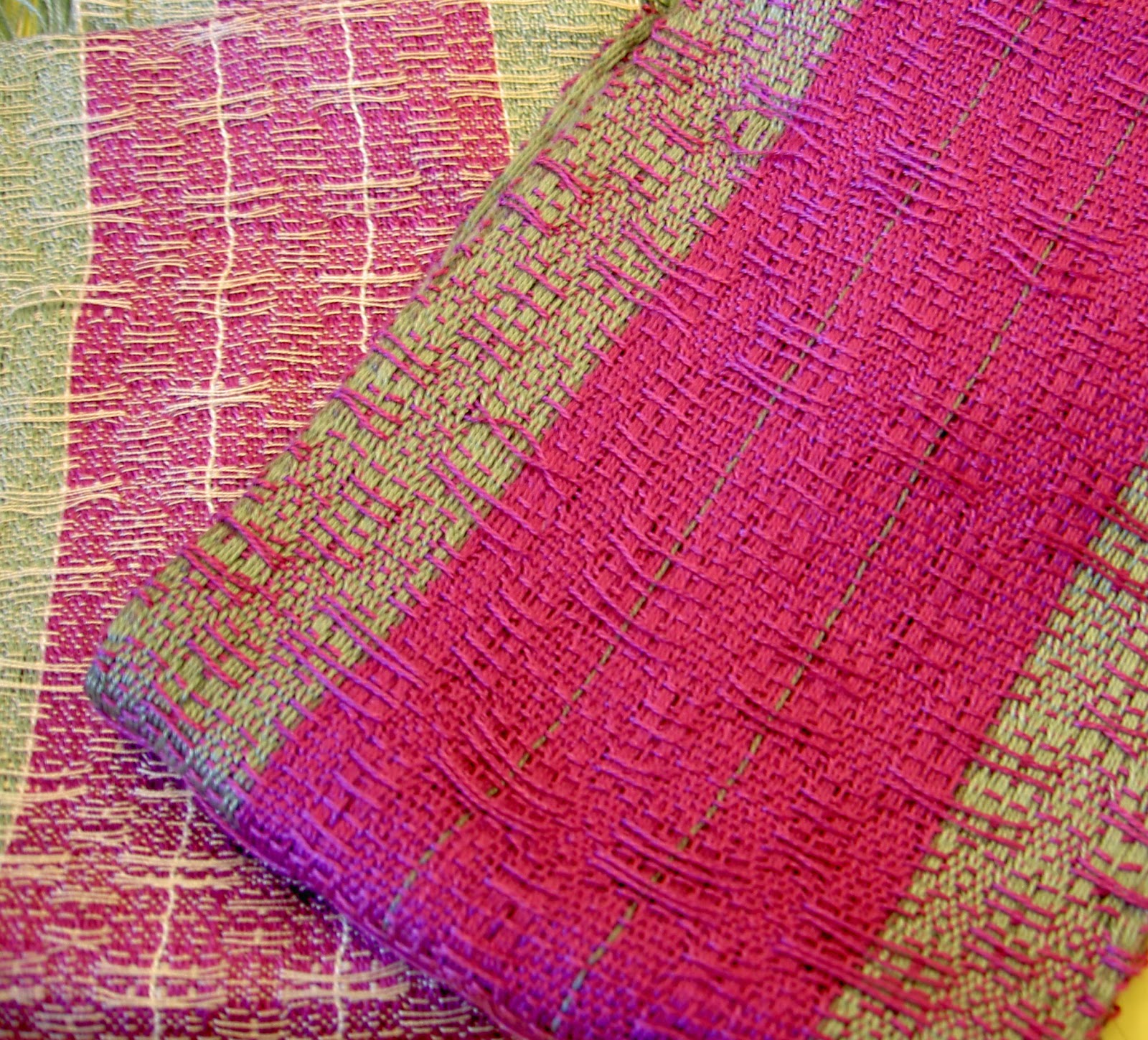Donna Kim has a chair caning business in Toronto (link on the right of thi spage - Edge of your Seat) and these days she's also exploring basket weaving. Here she isshowing us the results of her shibori classes with the Toronto Weaving School offered last spring. This was done by folding, clamping a piece of wood onto the fabric, then dyeing.
Recently I had a great talk with a new student in my class. Her name is Sharon Alexander and she has her own photogrpahy and graphic design business. http://alexanderstudio.dphoto.com/. One of the comments she made while we were talking is that it was surprise to her that the weaving classes were so much more than just learning to weave classes - that connections and bonding happened, new friends made.....a supportive and caring environment for each participant. (Now that I know that she's a photographer though, hope she won't find the pictures of my classes and projects too appalling!) Continuing with the theme we have been exploring over the last several blogs about how weaving is such a good metaphor for life, once again it is apropos in describing these social interlacements.
Though the designs seem simple, Donna spent hours sewing and wrapping which created resist areas where the dye could not penetrate.
Weaving is usually considered a solitary practice. In part this is what might draw people to weaving. I've read some enlightening books about solitude as well as on creativity and solitude is very much linked to the process of creativity. In solitude, we have time to connect to our own thoughts and feelings, our own ideas and give our attention to learning something new. Through solitude, we reflect on other things going on in our lives and to find meaning in it all. From the chaos created from the sometimes tangled threads of thoughts, emotions, relationships and life situations, we can find some order (peace) in these moments of solitude.
More results from Donna's foray into shibori techniques - above and below.
One of my favorite books on solitude is by Anthony Storr entitled Solitude: A return to the Self : http://books.google.ca/books/about/Solitude.html?id=graaRCq83QMC&redir_esc=y
Undoubtedly, much as I appreciate my times of solitude, I equally appreciate time with others. It's energizing, stimulating and keeps me motivated and enjoying life.
Melissa Nurmi knitters loom scarf made with assorted yarns.
Sandi Dunn created two beautifully woven Rep weave rugs. The designs were taken from Laila Lundell's book: Repweave: 27 projects page 28.
Been parted by the hurrying world, and droop,
Sick of its business, of its pleasures tired,
How gracious, how benign, is Solitude."
— The Prelude by Wordsworth
Branch Ranch
Here's a place to go in Ontario that sells all kinds of branches for basket weaving and decoration: http://www.thestar.com/life/2013/11/22/at_the_branch_ranch_an_unusual_farm_they_grow_what_else_branches.html
Check out and subscribe to Joe Lewis fibreQuarterly, an online fibre magazine. Joe himself has an immense knowledge of weaving and often features it in his magazine. https://www.facebook.com/groups/fibreQuarterlyGroupies/permalink/10151920049629597/. Recently he posted that Canadian Amanda McCavour, who was not only one of two recipients of the HGA"s Dendel Scholarship given by the Handweaver's Guild of America aka HGA, but is the current cover story of their magazine, Shuttle, Spindle and Dyepot. http://www.weavespindye.org/pages/?loc=1-60-00&p=cover.html. Thanks Joe!












































